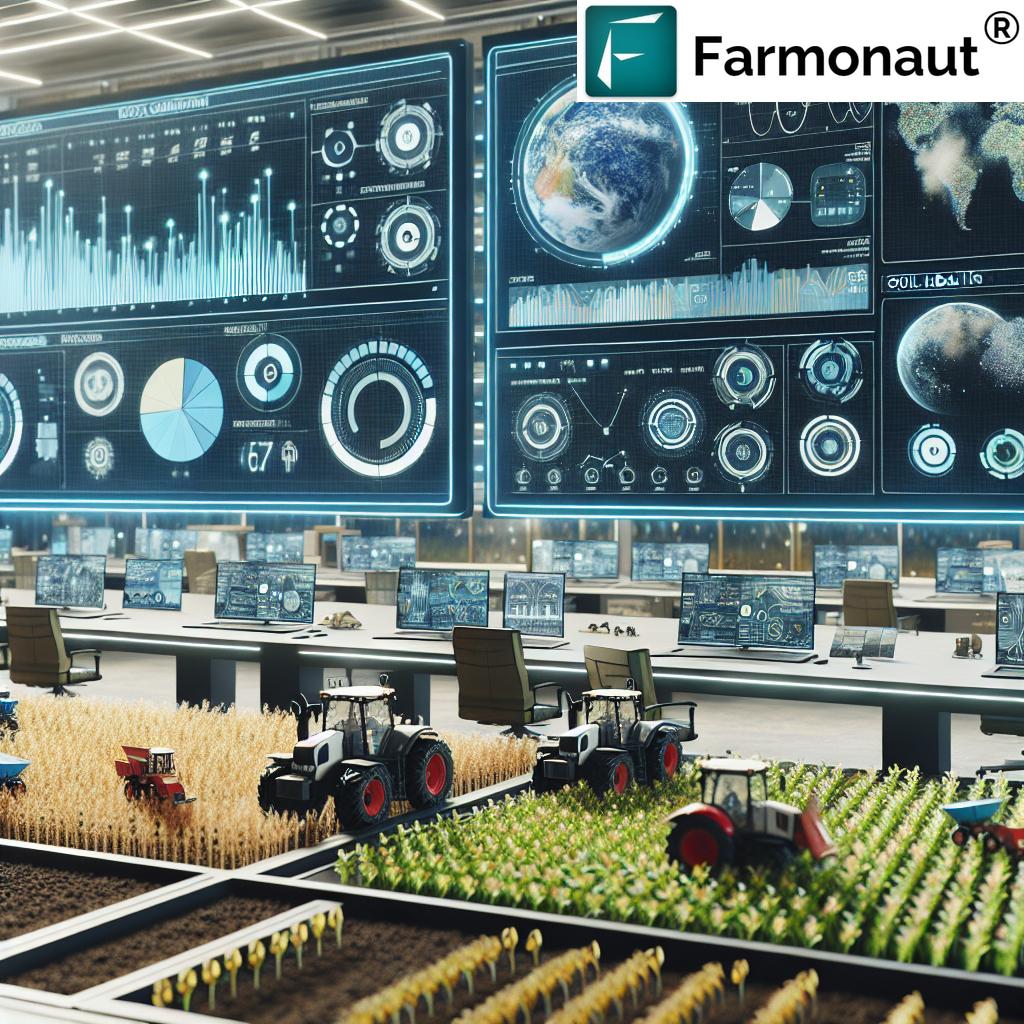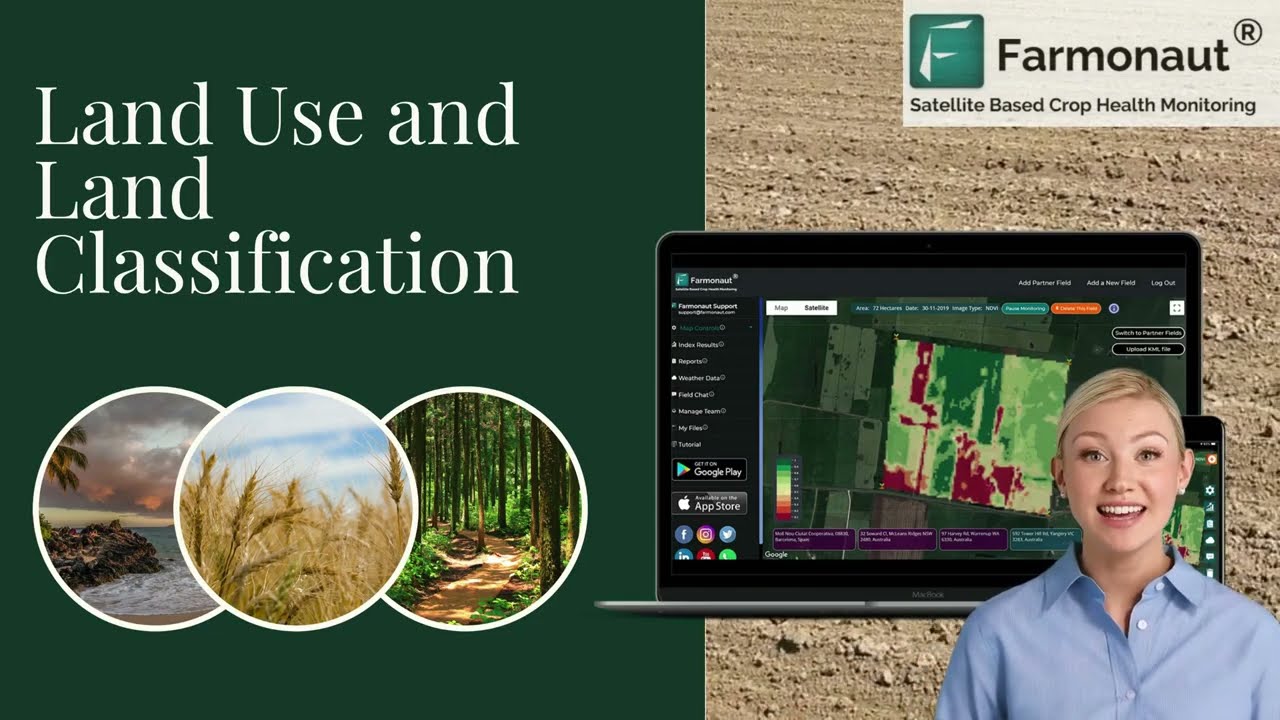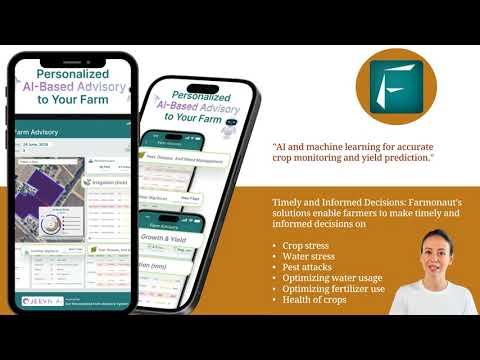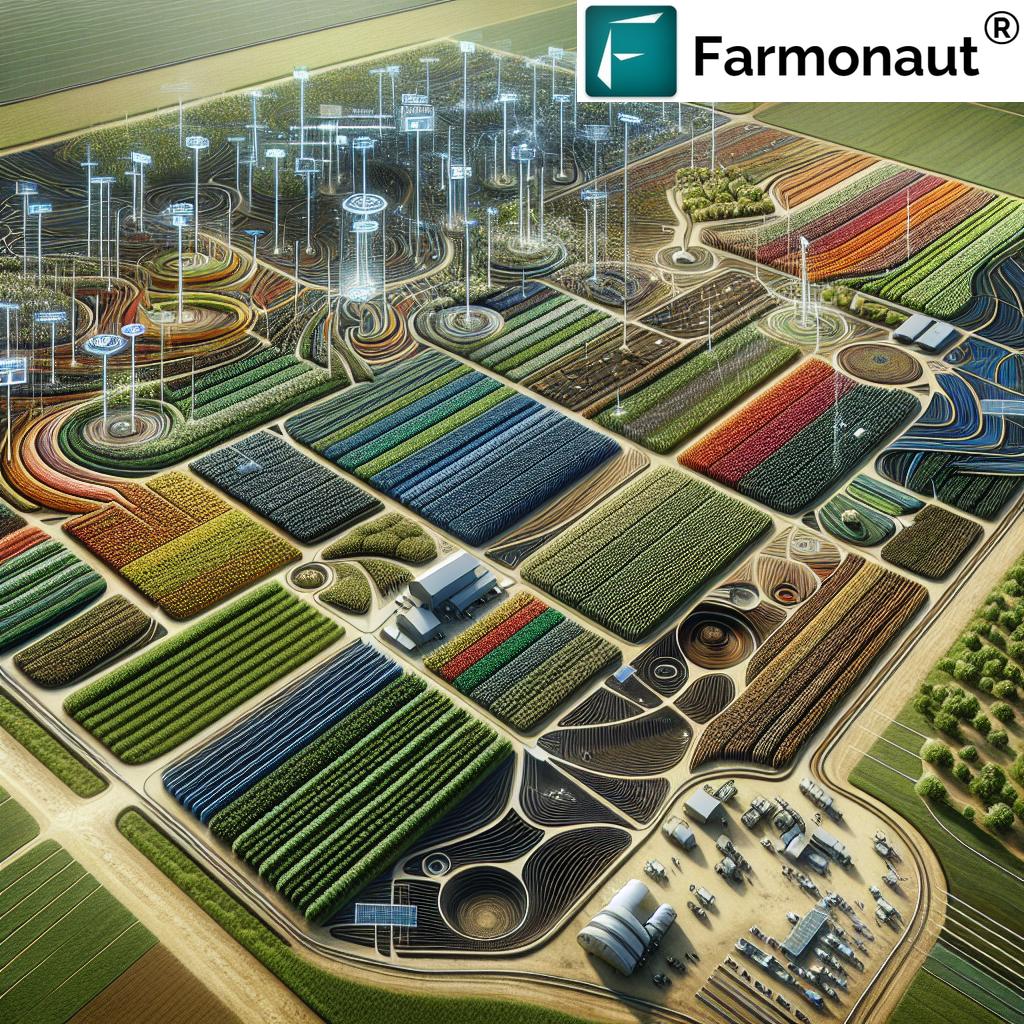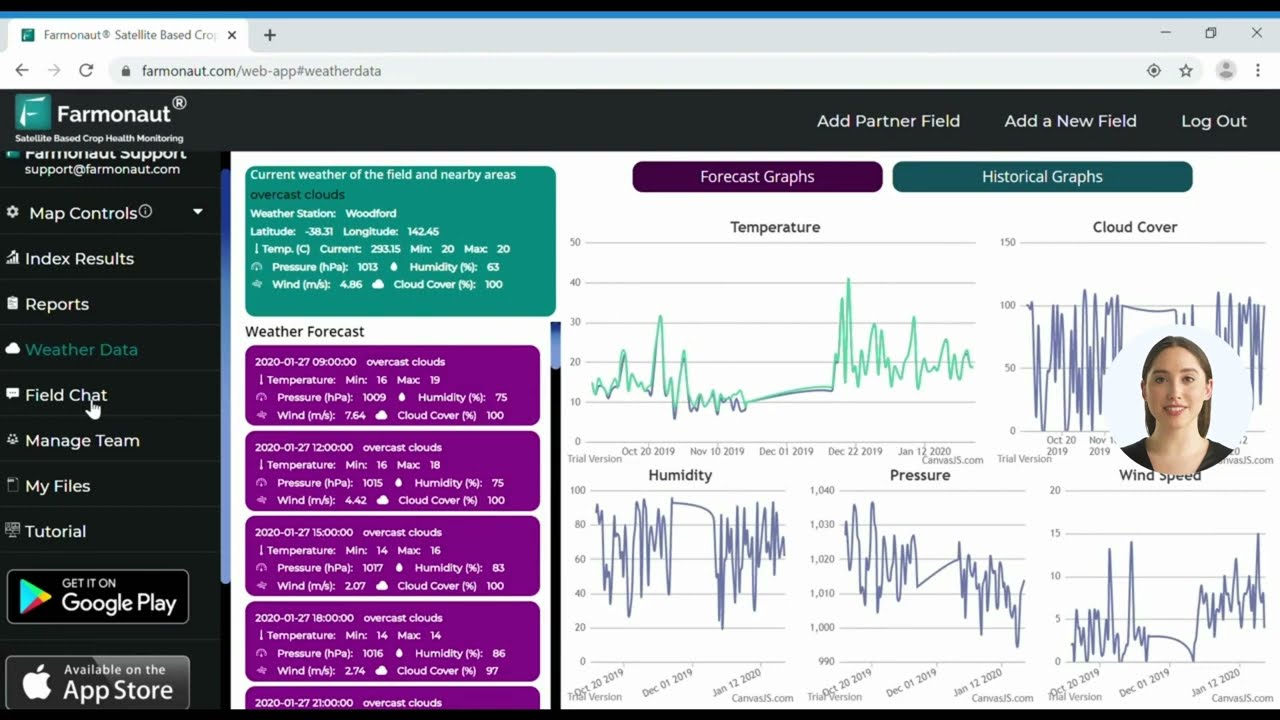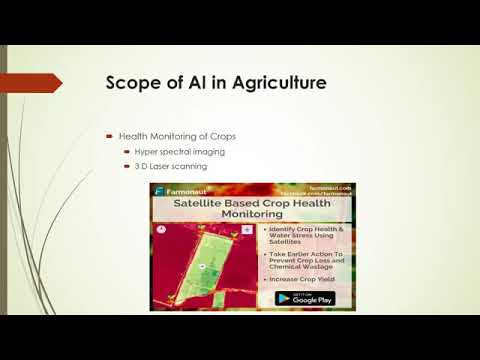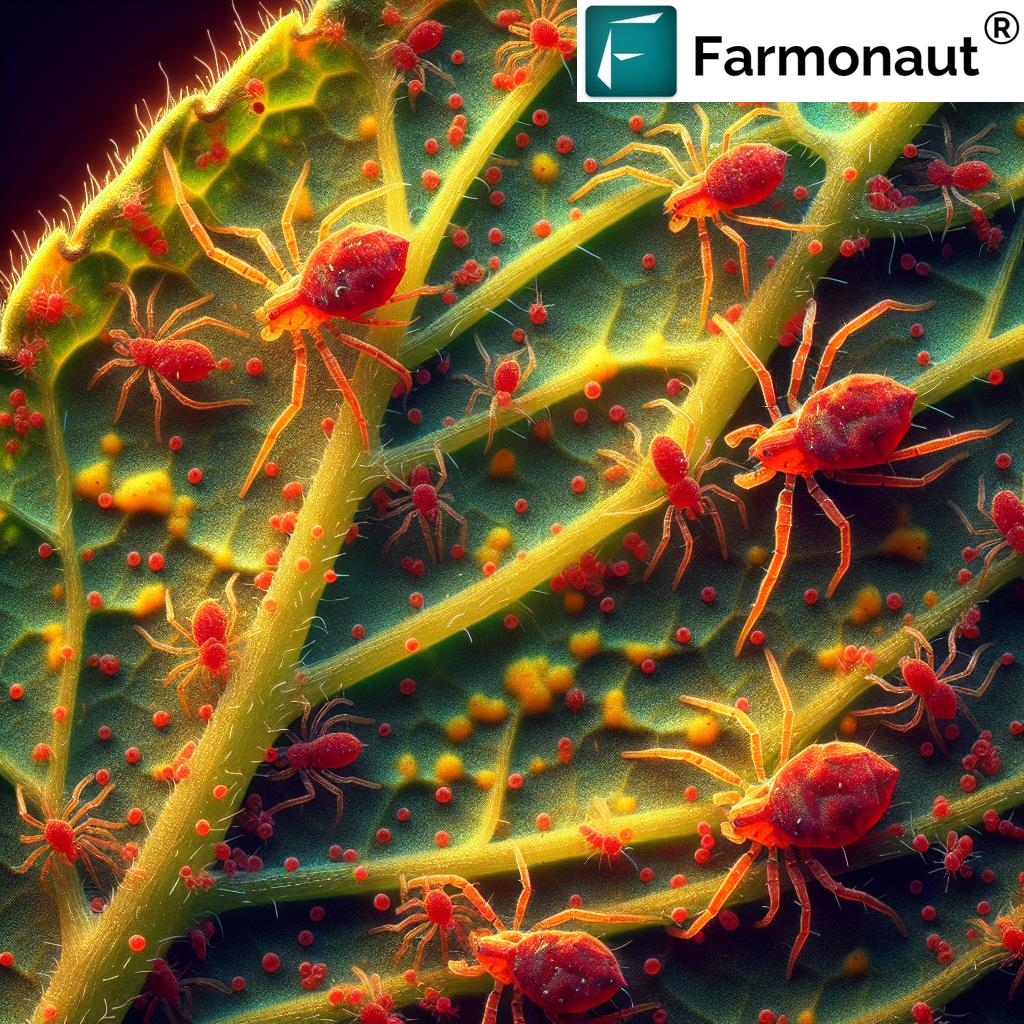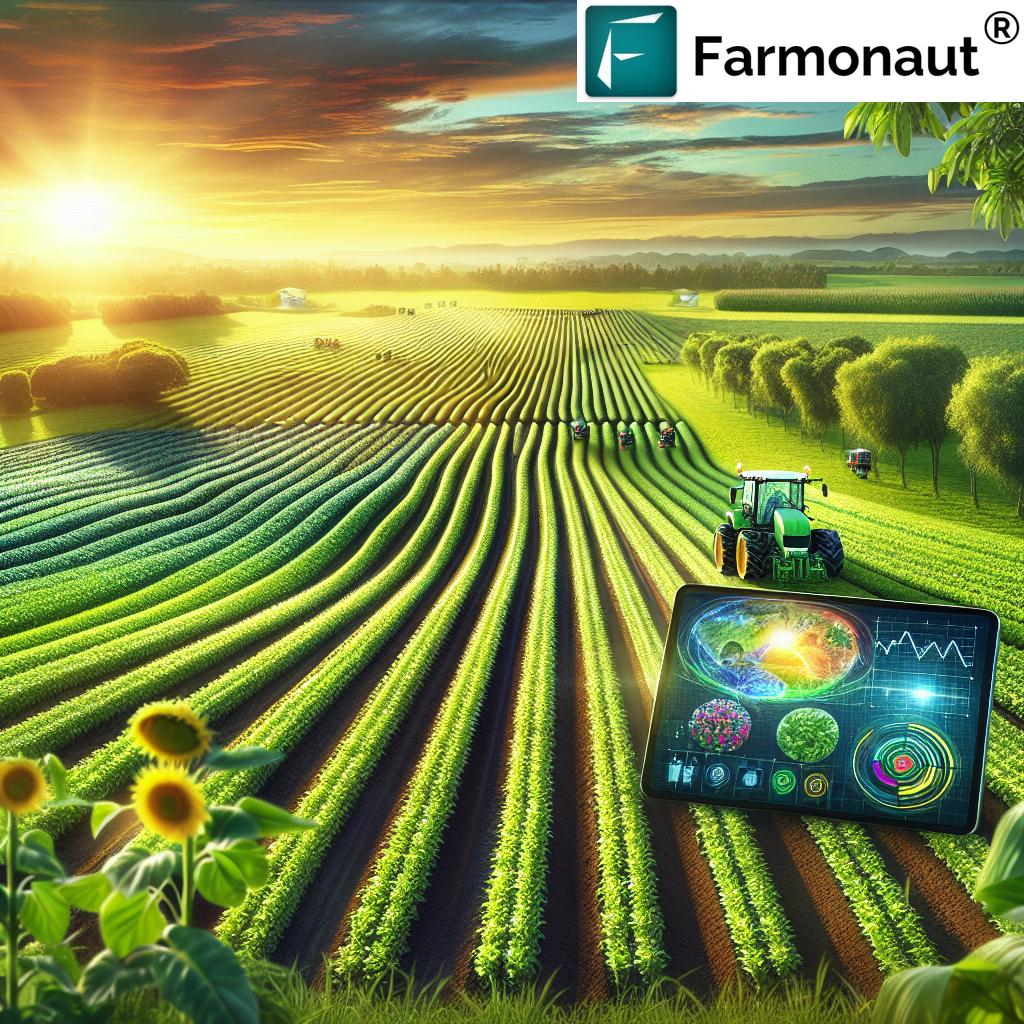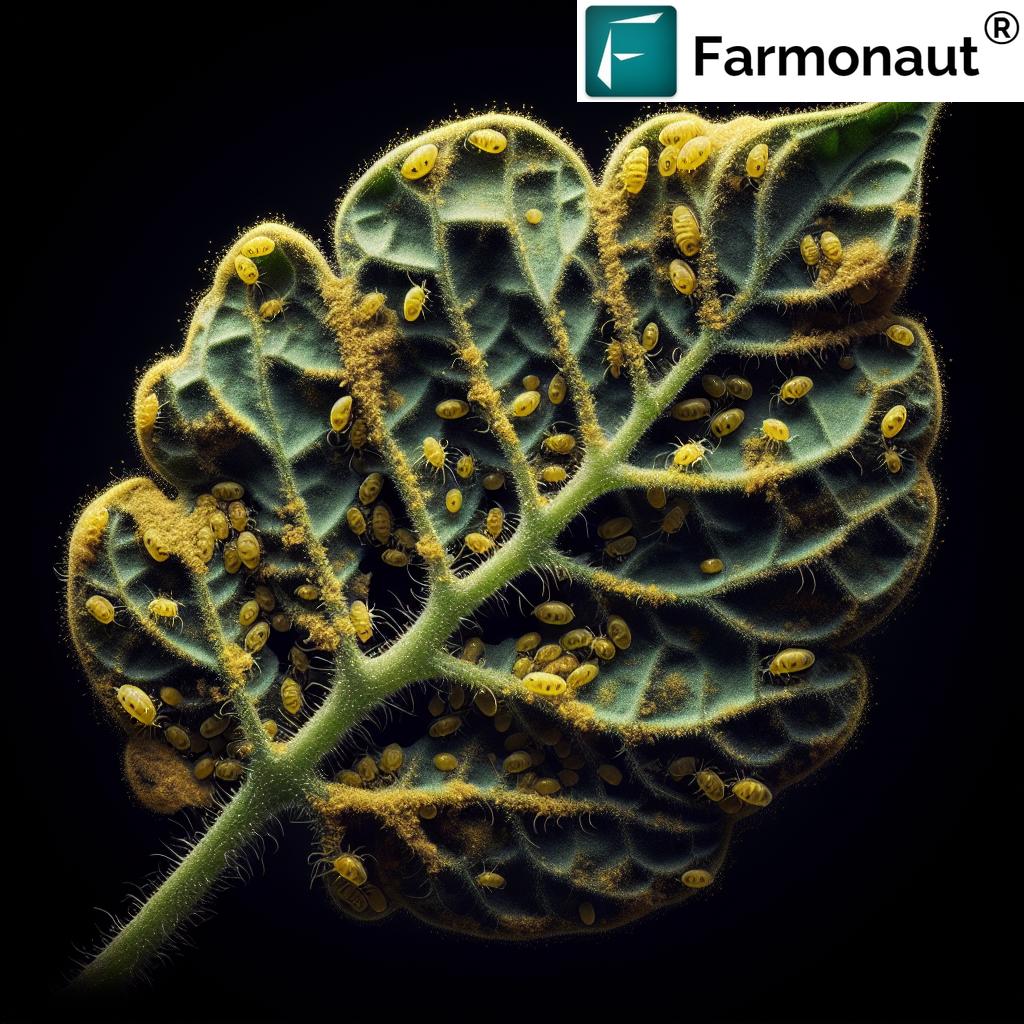Table of Contents
- Introduction
- Why Farm Data Management Matters
- Key Components of Farm Data Management
- Technologies Enabling Precision Agriculture
- Challenges in Farm Data Management
- Best Practices for Effective Farm Data Management
- Emerging Trends in Farm Data Management
- Farmonaut: Transforming Farm Data Management
- Comparison Table: Farm Data Management Technologies & Impact
- FAQ: Farm Data Management & Precision Agriculture
- Conclusion
“Farm data management can boost crop yields by up to 25% through precise, data-driven decisions.”
Farm Data Management: Unlock Yield & Profits Fast!
In today’s ever-evolving agricultural landscape, farm data management stands as a game-changer for farmers seeking to maximize productivity, efficiency, and sustainability. By leveraging advanced technologies—such as IoT devices, satellite imagery, precision agriculture tools, and AI-powered analytics—we can collect, integrate, and analyze critical information about our fields, crops, and operations. This comprehensive, data-driven approach empowers us to make informed decisions, optimize resources, and unlock higher yields and profits faster than ever before.
Whether we are individual farmers, agribusinesses, or government organizations, harnessing the power of smart, real-time farm data management ensures our success and sustainability in a highly competitive agricultural environment. In this detailed blog, we’ll explore the key components of agricultural data management, highlight the latest technologies and practices, address the major challenges, and showcase how solutions like Farmonaut
are revolutionizing the way we farm for the future.
How Farmonaut’s Satellite Technology is Revolutionizing Land Use in Agriculture
Why Farm Data Management Matters
As we confront modern agricultural challenges—ranging from fluctuating weather conditions, resource constraints, to increasing food demand—embracing farm data management has become essential. By methodically collecting, storing, and analyzing a wide array of agricultural information, we gain a holistic view of our farm operations and empower ourselves to:
- Boost crop yields and profitability by making data-driven decisions.
- Optimize resource allocation (water, fertilizer, machinery use) and reduce input wastage.
- Increase operational efficiency and minimize labor and input costs.
- Enhance sustainability and environmental stewardship with precise, eco-friendly agricultural practices.
- Improve disease and pest management through timely, data-informed interventions.
- Build resilience against unpredictable climate events.
The integration of IoT in agriculture, precision agriculture technology, and satellite-based platforms has unlocked new opportunities for us to monitor, manage, and optimize every facet of our farms for long-term sustainability and growth.
“Precision agriculture technology reduces fertilizer use by 20%, optimizing resources and increasing farm efficiency.”
Key Components of Farm Data Management
Let’s break down the essential building blocks of farm data management, each playing a vital role in our journey toward data-driven, sustainable agriculture:
-
Data Collection:
- Start by collecting precise, relevant agricultural data from various sources: soil health, weather, crop growth, machinery performance, pest outbreaks, and more.
- Modern IoT devices, soil sensors, drones, satellite imagery, and GPS-based equipment automate the process, minimizing errors and delivering real-time feeds to our centralized platforms.
- For example, using Farmonaut’s platform, we can gather satellite-derived NDVI (Normalized Difference Vegetation Index) for crop growth and soil moisture status—vital to irrigation and fertilizer planning.
-
Data Storage and Integration:
- Once collected, it’s critical to store our datasets securely—often in cloud-based, scalable platforms for easy access and management.
- Integrating information from multiple sources (IoT, satellites, weather stations, manual entries) provides a holistic view and enables advanced agriculture data analytics.
- Ensuring compatibility and standardization of data formats is essential for efficient processing and future-proofing our systems.
-
Data Analysis and Decision-Making:
- The real value lies in analyzing the integrated data to detect patterns, correlations, trends, and anomalies.
- Statistical analysis and predictive modeling enable accurate crop yield prediction, detect potential pest outbreaks, and inform optimal resource allocation.
- Platforms like Farmonaut employ advanced analytics and AI-driven advisories (e.g., Jeevn AI system) for in-field decision support.
By rigorously implementing these components, we continuously refine our farm management systems for greater resilience, profitability, and sustainability.
Explore Farmonaut’s Advanced Crop Monitoring & Yield Prediction
Technologies Enabling Precision Agriculture & Data-Driven Farming
The revolution in farm data management is powered by the convergence of cutting-edge technologies that make precision agriculture technology accessible, affordable, and scalable. Here are the key enablers:
- IoT in Agriculture: Sensors placed throughout fields collect real-time information on soil health, weather conditions, crop moisture, and machinery status. This continuous agriculture data collection feeds integrated management platforms with up-to-date insights.
- Satellite Imagery: High-resolution, multispectral satellite images analyze crop vigor, vegetation health (NDVI), and water stress. Platforms like Farmonaut bring these advanced analytics right to our devices.
- GPS-Guided Equipment: Modern tractors and sprayers use GPS to ensure accurate application of water, fertilizers, and crop protectants. This leads to targeted input delivery, boosting yields and minimizing resource waste.
- Drones: Collect high-frequency aerial imagery for crop monitoring, pest scouting, and mapping, supporting prompt interventions and resource optimization.
- Artificial Intelligence & Machine Learning: Power predictive analytics, crop yield forecasts, and in-depth pattern analysis, guiding actionable advice for every hectare.
- Blockchain: Secures data, enhances supply chain traceability, and builds consumer trust with verifiable traceability solutions.
Together, these technologies create the foundation for data-driven farming, enabling us to optimize operations, respond to challenges quickly, and embrace sustainable farming practices.
Farmonaut Web app | Satellite Based Crop monitoring
Challenges in Farm Data Management
Despite the sweeping benefits, adopting sophisticated farm data management systems does come with certain challenges that need addressed:
-
Technical Expertise Required:
Not all of us are comfortable with advanced technologies or data analysis tools. User-friendly interfaces and comprehensive training programs—like those offered by Farmonaut—help make these systems accessible to the widest audience. -
High Initial Investment:
The cost of acquiring IoT devices, sensors, and analytics platforms can be an obstacle, especially for small- and medium-sized farms. However, platforms such as Farmonaut drive affordability by leveraging satellite data, reducing dependence on expensive hardware. -
Data Security & Privacy:
With so much agronomic information collected and stored digitally, concerns over unauthorized access and data misuse are legitimate. Robust encryption, cloud security, and clear data-sharing policies are critical safeguards. -
Standardization & Compatibility:
Integrating multiple data sources (from IoT, GPS, drones, satellites, and manual inputs) requires standardized data formats and seamless compatibility to prevent silos, redundancy, and analytics gaps.
Addressing these hurdles with scalable solutions, technical support, and robust security protocols ensures the successful implementation of farm management systems at any scale.
Discover Farmonaut’s satellite-based crop loan and insurance verification services
— designed to streamline financing with accurate, real-time farm analytics.
Explore blockchain-based traceability for transparent farm-to-consumer supply chains
— ensuring food authenticity and compliance.
The Role of Artificial Intelligence in Agriculture – Farmonaut | Agritecture | Joyce Hunter
Best Practices for Effective Farm Data Management
Implementing a robust, scalable, and efficient farm data management strategy is not just about technology—it’s about disciplined practices and continuous improvement. Our recommendations include:
-
Regular Calibration of Equipment:
Precision begins with accurate data collection. Ensure all sensors, GPS units, and drones are correctly calibrated to avoid faulty readings and misleading analytics. -
Simplified Data Exchange:
Choose platforms and systems known for excellent compatibility and integrated data exchange to connect all equipment, devices, and teams efficiently. -
Data Standardization:
Standardizing formats and naming conventions (such as date formats, field IDs, sensor types) enables seamless integration and supports advanced predictive modeling. -
Automating Data Collection and Processing:
Automate repetitive tasks—like field scouting, weather data logging, or irrigation monitoring—using connected IoT in agriculture. -
Data-Driven Decision Making:
Move from intuition-based to data-driven farming—leveraging predictive analytics for timely interventions, from pest management to harvest scheduling. -
Secure and Accessible Storage:
Store collected data securely in the cloud, giving authorized stakeholders access anywhere on any device.
By following these best practices, we can optimize every facet of farm management—from planting and irrigation to pest defense and harvest logistics.
Emerging Trends: The Future of Farm Data Management
As technology and agriculture continue to evolve side by side, several emerging trends will shape the way we approach farm data management and sustainable farming going forward:
-
Advanced Analytics & AI Integration:
The use of machine learning and AI will enable us to predict disease/pest outbreaks, model climate impacts, and improve crop yield forecasting with higher accuracy. -
Seamless Interoperability:
Upcoming farm management systems will offer improved compatibility, integrating data from diverse sources (IoT, satellites, manual) and creating a unified dashboard view for real-time, holistic decision support. -
Sustainability Focus:
With stricter environmental regulations and the rise of sustainable farming practices, data management platforms will track, report, and help optimize resource use and carbon footprints. -
Blockchain Traceability:
Blockchain will become standard for crop traceability, food safety, and compliance in the global agriculture supply chain. -
API-Driven Farm Data Integration:
Open API platforms—like Farmonaut’s satellite and weather data API—will let us integrate farm data right into our custom apps or enterprise management systems. Explore Farmonaut’s API documentation for seamless integration possibilities. -
Scalability & Personalization:
Modular systems will allow us to scale our data management—from single plots to nationwide agricultural initiatives—while delivering context-specific advisories and support.
Staying ahead of these data management trends ensures our farm businesses remain competitive, agile, and sustainable in an evolving global food system.
Farmonaut: Transforming Farm Data Management Globally
As farm data management becomes essential, Farmonaut stands out as an innovative agricultural technology platform that democratizes precision farming and advanced analytics.
-
Accessible Multi-Platform Solutions:
Farmonaut delivers its precision agriculture technology via Android, iOS, web/browser platform, and API, making smart data management accessible for any farmer, anywhere. -
Key Services:
- Satellite-Based Crop Health Monitoring: Visualize crop vigor, NDVI, soil moisture, and stress via high-frequency satellite imagery.
- AI-Powered Advisories (Jeevn AI): Personalized recommendations, weather forecasts, and actionable insights to optimize yield and resource use.
- Blockchain-Based Traceability: End-to-end traceability services for safe, transparent food supply chains.
- Fleet & Resource Management: Real-time tools for monitoring, optimizing, and maintaining farm equipment and logistics. Learn more about fleet management.
- Carbon Footprinting: Track and reduce agricultural carbon emissions for sustainable farming practices.
- API & Developer Tools: Integrate Farmonaut’s advanced analytics into your custom software solution using Farmonaut API and developer documentation.
-
Flexible & Affordable Subscription Model:
Farmonaut’s scalable pricing empowers smallholder farmers, cooperatives, large-scale businesses, and government users to access tailored data management services. -
Empowering Sustainable & Profitable Agriculture:
By making data-driven farming tools affordable and easy to use, Farmonaut enables us all to increase productivity, reduce input costs, and farm more sustainably—no matter the scale of our operations.
Comparison Table: Farm Data Management Technologies & Their Impact
| Technology Type | Main Function | Estimated Yield Improvement (%) | Estimated Cost Savings (%) | Data-Driven Decision Examples |
|---|---|---|---|---|
| IoT Sensors & Devices | Continuous crop, soil, weather, and equipment data collection | 18–22% | 10–15% | Dynamic irrigation scheduling, real-time alerts for equipment failures, pest outbreak warning |
| Satellite Imagery & Remote Sensing | Large-scale crop health, NDVI, and moisture mapping | 20–25% | 12–18% | Targeted fertilizer application, precision harvest timing, stress detection |
| GPS-Guided Equipment | Precise input application, reduced overlap & waste | 15–18% | 20–25% | GPS-guided planting, pesticide/fertilizer savings, optimized fuel use |
| Drones | High-frequency aerial imaging & field scouting | 12–15% | 8–13% | Spot pest/disease outbreaks, variable-rate spraying, precision mapping |
| AI / Machine Learning Platforms | Predictive crop yield, pest/disease forecasting, actionable analytics | 20–25% | 12–16% | Yield optimization, early risk alerts, intelligent planting advice |
| Blockchain Traceability | Tamper-proof supply chain tracking, enhanced transparency | n/a | n/a | Origin verification, certification for export, fraud prevention |
FAQ: Farm Data Management & Precision Agriculture
What is farm data management?
Farm data management is the systematic process of collecting, integrating, analyzing, and utilizing data from diverse sources (like soil sensors, weather stations, GPS-guided equipment, and satellites) to guide farming decisions. It enhances yields, improves efficiency, optimizes resource use, and supports sustainability.
How do IoT devices and precision agriculture technology improve farming?
IoT in agriculture enables continuous, automated collection of real-time data on soil health, moisture, weather, and equipment performance. Precision agriculture uses this data (together with GPS and drones) to deliver resources exactly where and when needed, reducing waste and maximizing crop productivity.
What are the biggest challenges in implementing farm management systems?
The main challenges include initial investment costs, lack of technical expertise, integration of data from various formats, and ensuring data security. Choosing user-friendly, scalable platforms (like Farmonaut) and comprehensive training can help address these obstacles.
How does Farmonaut improve farm data management for different users?
Farmonaut offers an all-in-one platform—available on mobile, web, and API—to deliver satellite-driven crop monitoring, AI-based advisory systems, fleet/resource management, traceability, and sustainability tools. It’s scalable, affordable, and accessible for individual farmers, large agribusinesses, and government agencies alike.
How can I start using Farmonaut’s farm data management solutions?
Simply download the app (available for Android, iOS, or web) or explore API integration for advanced data analytics in your custom software. Select from flexible subscription options to match your needs.
What is the role of blockchain in agriculture?
Blockchain technology ensures tamper-proof, decentralized record-keeping. In farm data management, it delivers reliable traceability and transparency, allowing both producers and consumers to confidently verify the origin and integrity of products.
How does farm data management support sustainable farming?
By optimizing resource use (water, fertilizer, energy), reducing environmental impact (via carbon tracking tools), and supporting precise, eco-friendly interventions, farm data management helps us meet today’s stern sustainability standards without compromising productivity.
Conclusion: A New Era of Smart, Data-Driven Agriculture
The future of farming depends on our ability to harness farm data management—integrating cutting-edge technology, comprehensive analytics, and actionable insights into our everyday agricultural practices. By collecting, processing, and utilizing data intelligently, we unlock unprecedented growth in yield, efficiency, and sustainability.
With platforms like Farmonaut, even the smallest farms can access powerful satellite analytics, AI-driven guidance, and blockchain-enabled supply chain solutions. This levels the playing field, allowing all of us—regardless of location or scale—to thrive in a complex, competitive market.
Now is the time to embrace the transformative potential of farm data integration, precision agriculture technology, and smart management systems. Let’s unlock our farm’s true potential—for increased profits, a healthier planet, and a food-secure future.





